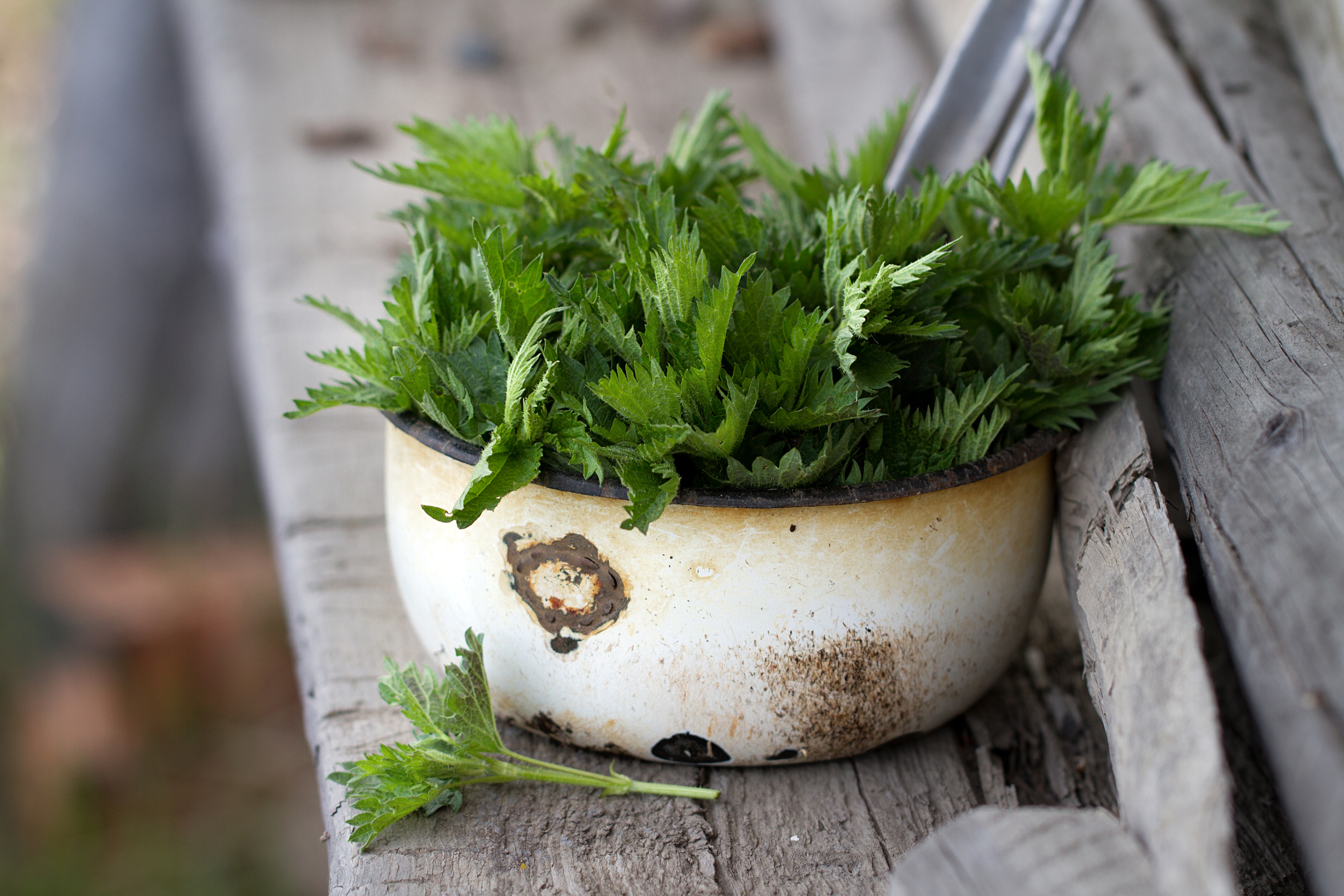No products in the cart.









Eloise Stark
Before the read
It’s a surprising food trend where chefs transform harmful plants and animals into sustainable dishes.
These ingredients may sound strange, but they’re part of a growing movement to rethink what belongs on our plates.
Many believe so, and the idea of turning ecological threats into meals is sparking serious conversation worldwide.
Before the read
It’s a surprising food trend where chefs transform harmful plants and animals into sustainable dishes.
These ingredients may sound strange, but they’re part of a growing movement to rethink what belongs on our plates.
Many believe so, and the idea of turning ecological threats into meals is sparking serious conversation worldwide.
A few years ago, I was living in a remote village in the Indian Himalayas. To do our grocery shopping, we had to trek two hours down a narrow mountain path and then carry our food supplies all the way back up. It was a grueling journey, and it meant that we could only buy calorie-dense supplies: beans, rice, and flour composed the bulk of our diet. Fruit and vegetables became a rare luxury, and one that was sorely missed. I found myself longing for something fresh, light, and vitamin filled.
Luckily, a few leafy greens were available in abundance around our farmhouse: nettles and wild hemp. We began foraging. We sautéed nettles into rich, peppery curries. We tossed the hemp in mustard oil and made big bowls of salad. They were surprisingly delicious, but more importantly, they were there. It was the first time I had made foraging a part of my diet, and it felt so satisfying to eat things that were free, sustainable, and wild.
Nettles are not an invasive species. They are native to large parts of the world and have traditionally been used in cooking and herbal medicine. But like so many wild plants, they have been dismissed as weeds, unwanted, out of place, to be torn up or burned to make way for more decorative foliage.

Reframing nettles not as a nuisance, stinging my ankles on romps through the countryside, but as something valuable changed my way of seeing things. And it opened my eyes to a more radical idea: what if we took it a step further and started eating the species we don’t want around?
This is the core idea behind a growing movement known as invasivorism—the practice of eating invasive species.

An invasive species is an organism that is not native to a particular area and that causes harm to the local ecosystem.
Since humans began traveling across vast distances, many species have been introduced into new environments. At times, this was unintentional. Seeds, animals, or germs would hitch a ride on ships, planes, cars, or in luggage.
At other times, it was done intentionally. European colonizers brought plants and animals with them to feel more at home (as they pushed others out of their homes).
Sometimes, a species was introduced to solve a certain problem but ended up causing far more harm than good. For example, British rulers introduced the cane toad to Australia in 1935 to control sugarcane pests, but it quickly overran the countryside. With no natural predators, it spread rapidly and poisoned native wildlife that tried to eat it.
This is just one example of how invasive species can permanently alter entire ecosystems. In fact, the harm caused is immense.

Invasivorism isn’t just about eating differently—it’s about thinking differently.
A 2023 report from the Intergovernmental Science-Policy Platform on Biodiversity and Ecosystem Services found that invasive species cost the global economy over $423 billion every year, damaging crops, spreading diseases, and driving native species to extinction. They’ve caused 33 percent of animal extinctions and 25 percent of plant extinctions since 1500, according to a study conducted in 2019.
The term “invasivorism” was coined by conservation biologist Dr. Joe Roman and refers to the practice of eating invasive species. It is a sustainable practice on two fronts. Not only does it take food that is readily available, rather than using resources to produce more, but it also helps reduce the number of harmful species in an ecosystem.
“I’ve spent my career trying to get people to stop overharvesting,” Roman told BBC. “Then it occurred to me: what if we did the opposite—ate the species we’re actually trying to get rid of?”
Roman started with green crabs and periwinkles, invasive sea creatures that he foraged and sautéed. “They’re actually quite tasty,” he says. Roman runs the website EatTheInvaders.org, which has recipes including everything from green iguana to coypu, a river rat with a big appetite that can eat up to a quarter of its weight daily.

Invasive species have caused 33% of animal extinctions and 25% of plant extinctions since 1500.
At first, people thought Roman’s idea of cooking with invasive species was just a gimmick. But gradually, invasivorism started to catch on, and restaurants in the US and the UK began introducing invasive species into their menus.
Silo Restaurant had already broken new ground when it opened as the world’s first zero-waste restaurant. Head Chef Doug McMaster took his environmental mission one step further when he began cooking with invasive species. One of his favorite ingredients is Japanese knotweed, the nemesis of any gardener in the UK. It spreads its creeping roots, gaining ground until, eventually, no other plants survive.
“It’s an amazing ingredient,” McMaster told the BBC. “It’s incredibly versatile; it can be grilled, it can be cooked, it can be turned into beer, fermented and pickled…. When you cook it, it tastes like rhubarb. When it’s raw, it’s more like asparagus, with a slightly sour flavour,” he says.
Other ingredients used by McMaster include lionfish, an odd-looking creature with large spikes, covered in red and white stripes, that has spread throughout the Atlantic Ocean and poses a threat to the native fish species and coral reefs. It has a gentle, buttery flavor similar to grouper or mahi-mahi.
Take care when preparing it at home, though. The sharp spines are venomous, even after the fish dies. Luckily, Tricia Ferguson and Lad Akin of REEF (Reef Environmental Education Foundation) partnered with chefs to create The Lionfish Cookbook, containing all sorts of advice on how to cook with it—and recipes that include lionfish nachos.
Another UK restaurant that has incorporated invasive species into its menu is Wedgwood the Restaurant in Edinburgh. Since 2008, Paul Wedgwood has cooked up squirrel meat, including squirrel haggis, a variant on the traditional Scottish dish. “It’s mellow, nutty and a bit gamey, and can be substituted for rabbit,” Wedgwood told The Guardian.
Reframing nettles not as a nuisance, but as something valuable, changed my way of seeing things.
There are so many invasive species in the world that cooking with them hardly puts a dent in population numbers. However, it has other beneficial effects, most importantly raising awareness about invasive species and encouraging us to view ingredients differently. “Not only is eating invasive species a solution, but we’re taking pressure off the food system, saving resources,” said McMaster.
It felt so satisfying to eat things that were free, sustainable, and wild.
Invasivorism became so popular that it was the subject of its own TV show in Australia. Over six episodes, chefs, scientists, and ecologists experimented with “ecological trash” to create gastronomical gold. The idea was to overcome preconceptions about some of Australia’s worst invasive species—rabbits, cane toads, carp, and more—and reframe them as tasty, protein-filled dishes.
What if we did the opposite—ate the species we’re actually trying to get rid of?
How do invasivores say bon appétit? Good riddance.
The Wrap








